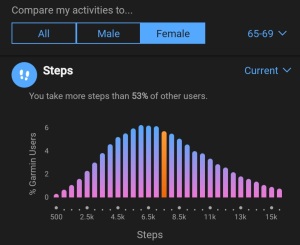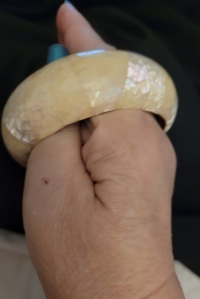
Welcome to Limberation! First up, here is the latest news if you just want to jump right in! There is an Introduction – a “what is Limberation about” further down.
- Feel Like I’m in a Holding PatternOn April 6, 2024 I started my NINTH psoriatic arthritis medication. Some medications have a loading dose period: this is one of them.… Continue reading →
- Tough, But Worth It!It was worth it, but man alive, am I glad I only have two ankles… Continue reading →
- Knees Breeze, Ankles RankleNecessary surgery, but not my kind of recovery! Feeling helpless is not my thing.… Continue reading →
- Are You In The Running For A Gold Medal?No, I don’t have one, at least not yet. What IS she on about, I see you wondering. Let me recap. Back in May 2023 I wrote about Crossing My Fingers – Again. As it turns out, I was counting my chickens before they hatched.… Continue reading →
- Rattle Ya Bones Day!Rattle Ya Bones Day is coming! Get informed. Get supported.… Continue reading →
- Two Cars in One Disability Car Park?Please do not park in disability parking spaces illegally. More importantly, don’t try to squeeze two cars in one spot!… Continue reading →
For the full article archive, click here. Keyword search may be useful:
Introduction To Limberation
Waking up stiff? Your doctor has told you to “get some exercise” but you don’t know where to start? Confused about what you should or shouldn’t do? Don’t give up!
Exercise is known to be great therapy for a range of health conditions. Each person will experience their particular medical situation differently: no two people are alike. Some people can feel the gym is a bit confronting in the early days and would prefer to have someone help them at home. Others want to ensure they keep up resistance training but want help in modifying their routines. Everyone is unique.
A variety of conditions can be improved with regular exercise. How early in your journey diagnosis took place, how effective your medications are and how strongly motivated you are to maintain the best possible quality of life for as long as possible, are all factors that affect your day-to-day well-being.
Below is a small snippet from Move, the new voice of Arthritis Victoria. Search “exercise” on the site and exercise is mentioned as desirable for the majority of conditions.
Muscle, bone and joint conditions (eg osteoarthritis, fibromyalgia and back pain) can cause pain, stiffness and often inflammation in one or more joints or muscles. Regular exercise can help you reduce some of these symptoms and improve joint mobility and strength.
If you have a condition that affects your muscles, bones or joints, you should have a balanced and regular exercise routine.
Source: Move.org.au
Movement As Medicine isn’t just about arthritis: other illnesses also benefit. For example, if you are undergoing or recovering from chemotherapy, exercise has been shown to be beneficial.
In 2010 in the USA the American College of Sports Medicine reviewed published studies looking at the safety of physical exercise during and after cancer treatment. They also reviewed what effect the exercise had. They focused on breast, prostate, leukaemias and lymphomas, bowel and gynaecologic cancers. In general they recommended the same level of activity for cancer patients as for the general population.
Source: Cancer Research UK.org
Movement and maintaining condition is also useful in the management of chronic pain. Learning to pace ourselves properly can be challenging but also very rewarding.
Donations
If you find the content on Limberation helpful and would like to support my work, donations are very welcome.
Make a one-time donation
Make a monthly donation
Make a yearly donation
Choose an amount
Or enter a custom amount
Your donation is appreciated and will help fund new content.
Your contribution is appreciated.
Your contribution is appreciated.
DonateDonate monthlyDonate yearly





